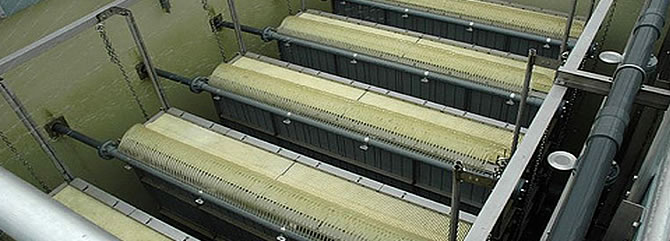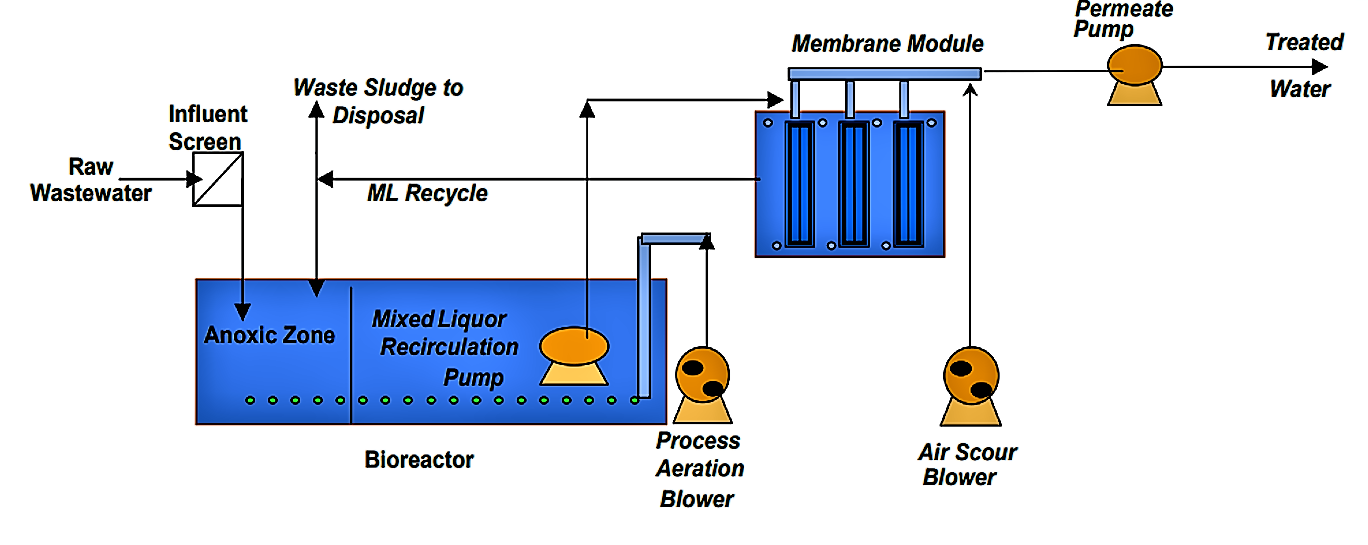Membrane Layer Bioreactors Discussed: Efficient Solutions for Tidy Water
Membrane bioreactors (MBRs) have actually emerged as a sophisticated remedy for resolving the pressing challenges of wastewater therapy - Membrane Bioreactor. By incorporating biological procedures with advanced membrane filtering, MBRs not just enhance the quality of cured water yet additionally decrease the spatial needs of treatment centers.

What Are Membrane Layer Bioreactors?
Membrane layer bioreactors (MBRs) are innovative wastewater treatment systems that combine organic destruction procedures with membrane purification innovation. This combination permits the reliable removal of contaminants from water, making MBRs a favored option in various applications, consisting of municipal wastewater treatment and commercial effluent administration.

Among the critical benefits of MBRs is their capability to generate premium effluent, frequently suitable for reuse in irrigation or industrial procedures. In addition, MBRs need a smaller sized footprint compared to conventional therapy systems, making them ideal for city settings where space may be restricted.
Furthermore, MBRs can efficiently manage varying influent tons and are much less prone to the effects of hazardous shocks. These characteristics add to their growing appeal as a lasting service for resolving the enhancing need for clean water while reducing ecological influences.
Exactly How Membrane Layer Bioreactors Job
While the operation of membrane bioreactors (MBRs) might appear complex, it essentially rotates around the synergy in between organic procedures and membrane layer purification. MBRs integrate a biological treatment process, usually turned on sludge, with a membrane layer separation unit to treat wastewater successfully.
In an MBR system, wastewater is initial introduced into a bioreactor where microorganisms weaken natural issue and various other pollutants. The organic task reduces the focus of pollutants while promoting the growth of biomass. Following this biological treatment, the blended alcohol undergoes membrane layer purification, which can be microfiltration or ultrafiltration, relying on the preferred effluent quality.
The membranes work as a physical barrier, allowing water and small solutes to pass while preserving put on hold solids and bigger particles. This makes it possible for the system to keep a high concentration of biomass within the activator, improving the treatment efficiency.
Moreover, the constant splitting up of cured water from the biomass facilitates a portable layout and decreases the impact of the treatment center. Overall, the mix of organic deterioration and membrane layer purification in MBRs leads to reputable and effective wastewater therapy, ensuring top quality effluent ideal for different applications.
Advantages of MBR Modern Technology
Among the key benefits of membrane bioreactor (MBR) technology is its ability to generate top notch effluent with a dramatically lowered footprint contrasted to traditional wastewater therapy approaches. MBR systems efficiently incorporate biological therapy and membrane purification, resulting in premium elimination of impurities, including suspended solids, pathogens, and raw material. This capacity results in effluent that often satisfies or surpasses rigid regulative criteria for reuse and discharge.
Furthermore, MBR modern technology permits greater biomass concentrations, which improves the therapy effectiveness and lowers the required reactor volume. This next compact style is specifically advantageous in urban areas where space is limited. The functional adaptability of MBR systems also indicates they can adjust to varying influent high qualities and flow prices, making them ideal for a vast array of applications.
Furthermore, the reduced sludge manufacturing connected with MBR procedures adds to reduce functional and upkeep costs. The membrane layers work as a physical barrier, lessening the threat of obstructing and allowing longer operational periods in between cleaning. Overall, the advantages of MBR technology make it an appealing remedy for sustainable wastewater treatment, dealing with both environmental worries and the need for efficient resource management.
Applications of Membrane Bioreactors
With their flexibility and performance, membrane layer bioreactors (MBRs) discover applications across different sectors, consisting of metropolitan wastewater therapy, commercial processes, and also water recovery. In community settings, MBRs offer a small service for treating wastewater, efficiently removing contaminants while at the same time producing high-grade effluent that meets stringent governing requirements. This makes them specifically ideal for locations with limited room.
In industrial applications, MBR technology is made use of for dealing with process water, particularly in industries such as food and drink, drugs, and petrochemicals. These industries take advantage of MBRs' capacity to take care of high organic lots and their performance in recuperating useful resources from wastewater, such as nutrients and water.
In addition, MBRs play a vital function in water improvement initiatives, making it possible for the reuse of treated wastewater for watering, industrial processes, or also as potable water after more therapy (Membrane Bioreactor). Their effectiveness in removing contaminants and microorganisms makes them a trustworthy selection for making certain water top quality in different reuse applications
Future of Water Treatment Solutions
The future of water treatment remedies is poised for transformative innovations driven by technical advancement and raising ecological Extra resources awareness. As worldwide water shortage comes to be a pushing issue, brand-new methodologies, consisting of membrane layer bioreactor (MBR) systems, are set to play an essential duty in boosting the effectiveness and sustainability of water therapy procedures.
Emerging innovations such as fabricated intelligence and artificial intelligence are expected to maximize therapy operations, enabling real-time surveillance and anticipating maintenance. This will enhance the general reliability and performance of water therapy facilities. Improvements in membrane layer products, such as graphene and nanofiltration, assure to enhance permeation prices and lower fouling, leading to reduced power consumption and functional expenses.
Furthermore, the combination of renewable resource sources right into water treatment plants will contribute to greener practices. The round economic situation design will certainly also gain grip, encouraging the healing of useful resources from wastewater, such as nutrients and power.
Conclusion

Membrane layer bioreactors (MBRs) have arised as an advanced service for addressing the pressing obstacles of wastewater therapy. By integrating organic processes with innovative membrane layer purification, MBRs not only boost the top quality of treated water yet additionally decrease the spatial requirements of treatment centers.One of the vital benefits of membrane layer bioreactor (MBR) technology is its capacity to generate premium effluent with a substantially reduced impact compared to conventional wastewater treatment techniques.With their flexibility and efficiency, membrane layer bioreactors (MBRs) locate applications throughout numerous fields, consisting of community wastewater therapy, industrial procedures, and also water improvement.In conclusion, membrane bioreactors stand for a considerable improvement in wastewater therapy technology, incorporating organic processes with efficient membrane filtration to generate top notch effluent.
Comments on “Membrane Bioreactor vs. Traditional Treatment Methods: Key Differences Explained”